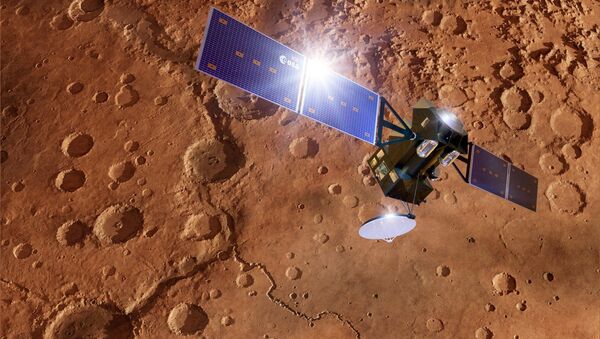MOSCOW (Sputnik) — The Trace Gas Orbiter of the joint ExoMars-2016 mission of Roscosmos and the European Space Agency (ESA) will carry out its initial observations and calibrations on Mars on November 20-28, according to the Russian Space Research Institute (IKI) of the Russian Academy of Sciences.
"20-28 November the activation of scientific instruments on board the machine Trace Gas Orbiter (TGO) of the ExoMars-2016 mission will be carried out. Four of the devices — including two Russian — will carry out the first calibrations and measurements on the highly elliptical orbit around the planet," the institute announced on its website on Monday.
On board are four instrument for the study of the atmosphere and surface of Mars: NOMAD, CaSSIS, ACS and FREND. The latter two were designed and built by the IKI.
The TGO is expected to carry out an elongated orbit for most of 2017, working gradually toward a circular orbit, which is expected to be achieved by March 2018. After this all of the orbiter's machinery will be activated.
A Russian Proton-M rocket carrier lifted off with the ExoMars’ orbiter and the landing modules from the Baikonur Cosmodrome in Kazakhstan on March 14.
The Schiaparelli lander, which was meant to test technologies for the second ExoMars expedition, scheduled for 2020, was ejected from the TGO on October 16, but failed to successfully reach the surface of Mars. The European Space Agency (ESA) has confirmed that the lander crashed.




